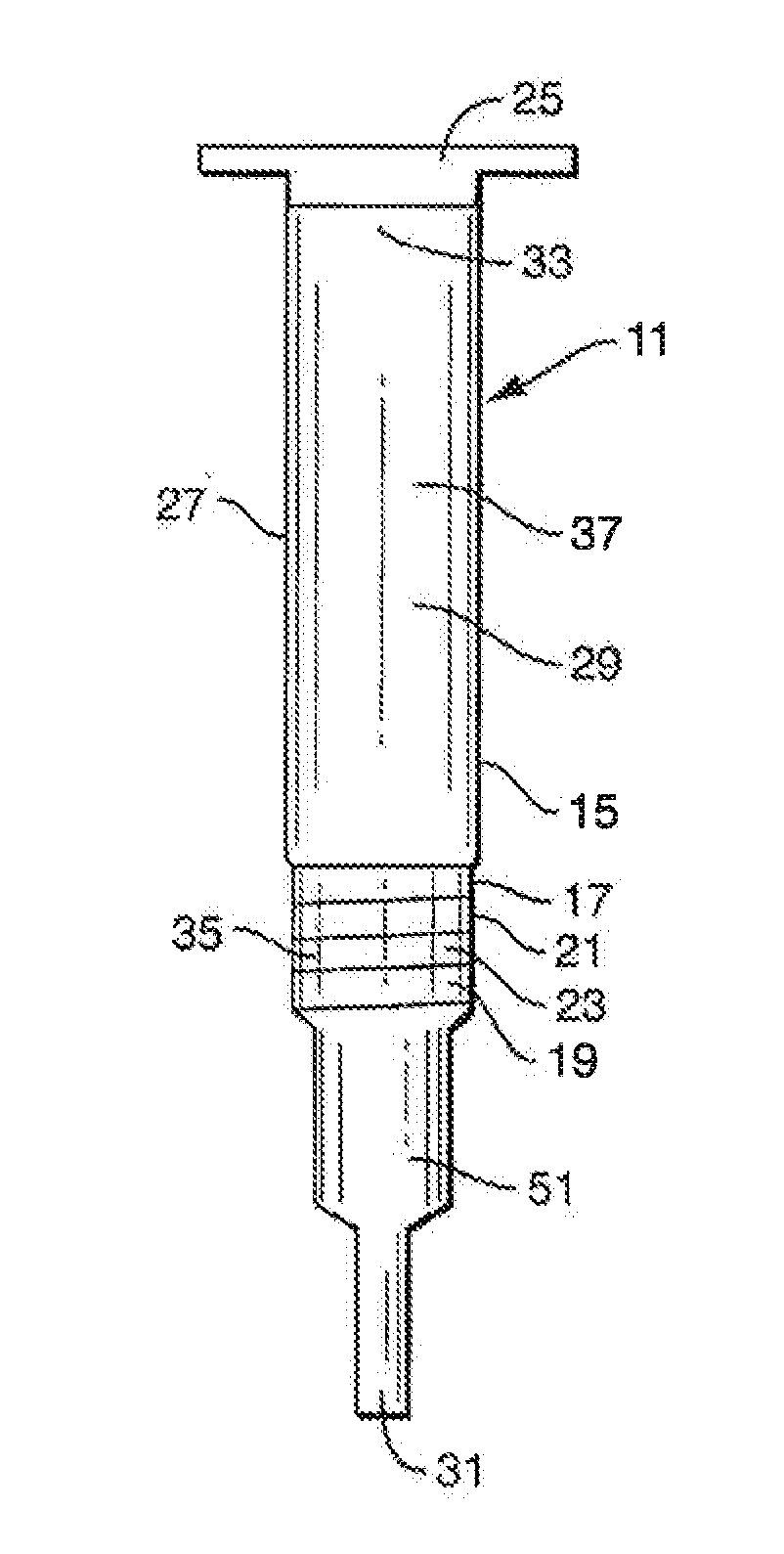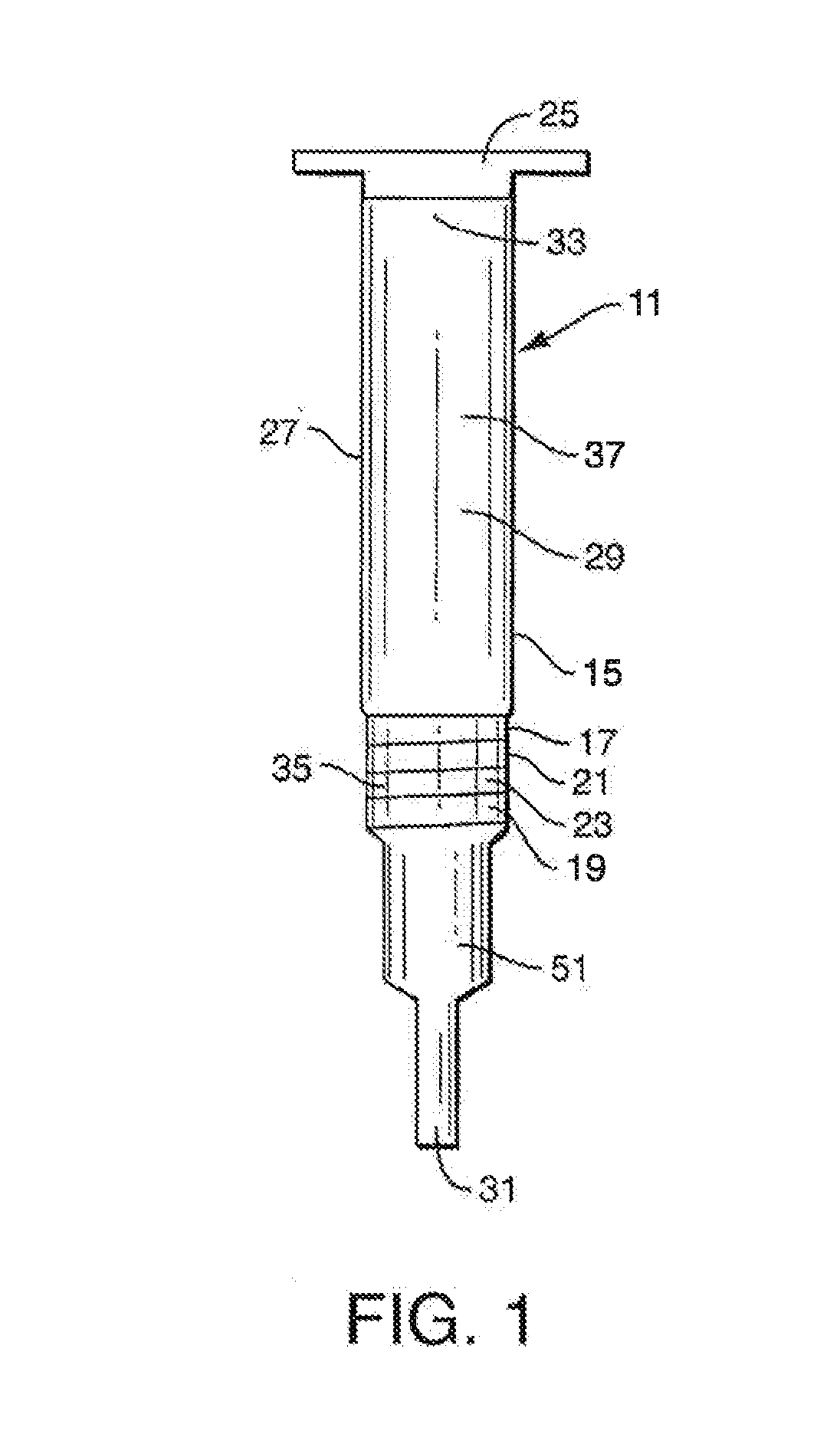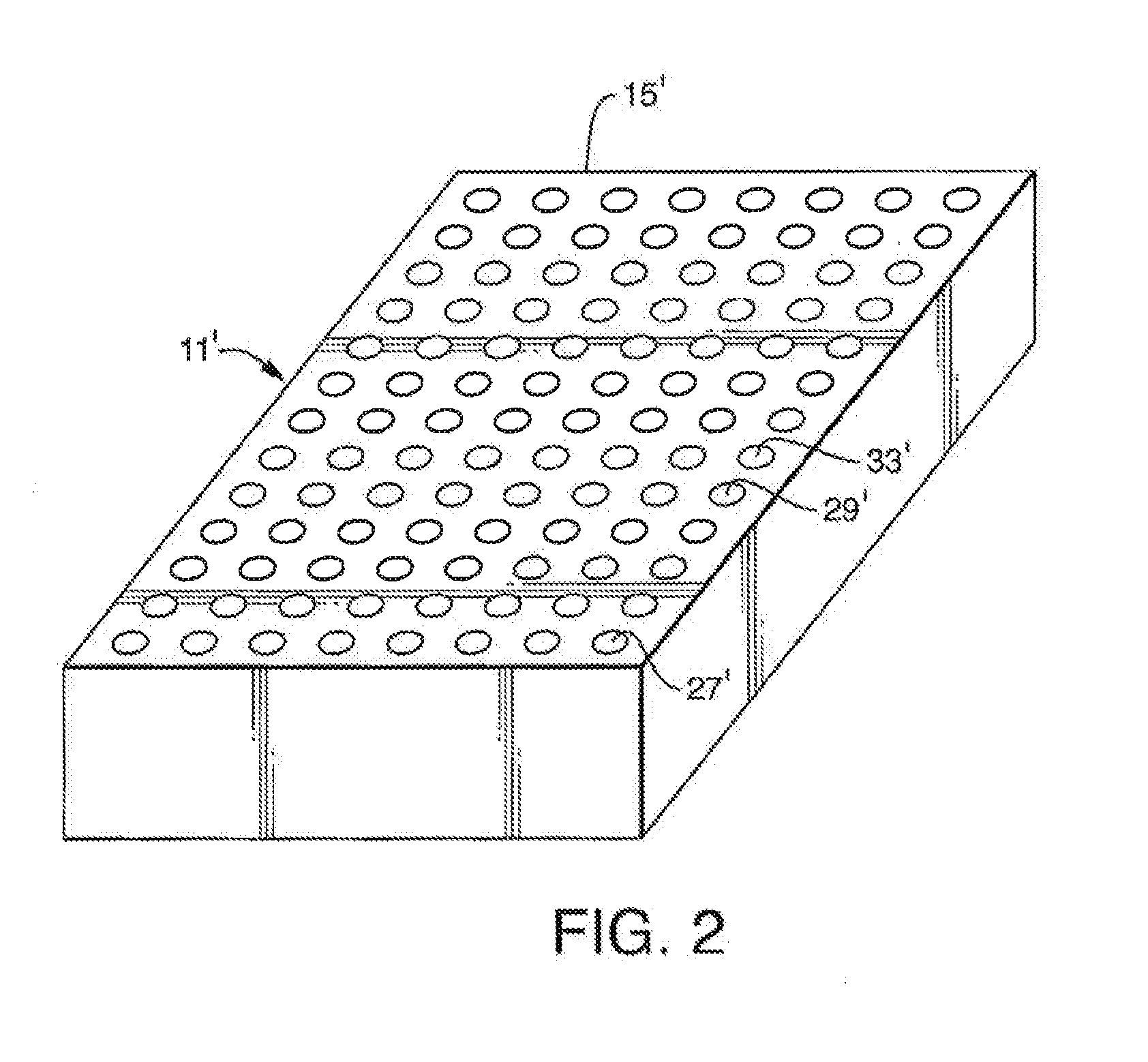Methods, compositions, devices, and kits for performing phospholipid separation
a technology of phospholipid separation and chromatography, applied in separation processes, laboratory glassware, instruments, etc., can solve problems such as chromatographic challenges
- Summary
- Abstract
- Description
- Claims
- Application Information
AI Technical Summary
Benefits of technology
Problems solved by technology
Method used
Image
Examples
example 1
[0082]Porous silica particles (Type A: 20 g of 44 μm irregular particles; SSA=511 m2 / g; SPV=0.73 cm3 / g; APD=50 Å or Type B: 20 g of 20 μm spherical particles; SSA=338-345 m2 / g; SPV=1.04 cm3 / g; APD=101 Å) were refluxed in toluene (175 mL, Fisher Scientific, Fairlawn, N.J.) for 1 hour. A Dean-Stark trap was used to remove 75 mL of trace water and toluene from the mixture. Upon cooling, imidazole (Aldrich, Milwaukee, Wis.) and octadecyldimethylchlorosilane (ODMCS, Gelest Inc., Morrisville, Pa.) were added. The reaction was then heated to reflux for 16-18 hours. The reaction was then cooled and the product was filtered and washed successively with toluene, water, and acetone (all solvents from Fisher Scientific). The product was then dried at 70° C. under reduced pressure for 16 hours. A sample of 1b was further refluxed in an acetone / aqueous 0.12 M ammonium acetate solution (Sigma Chemical Co., St. Louis, Mo.) for 2 hours. The reaction was then cooled and the product was filtered and w...
example 2
[0087]Porous silica particles (Type A: 20 g of 44 μm irregular particles; SSA=511 m2 / g; SPV=0.73 cm3 / g; APD=50 Å) were bonded using varying amounts of octadecyldimethylchlorosilane (ODMCS, Gelest Inc., Morrisville, Pa.) to produce a varying amount of ligand on the particle surface. The general procedure described above in Example 1 was used to produce the materials in Table 7. Reaction and product analysis data are listed in Table 7. The surface coverage of C18-groups was determined by the difference in particle % C before and after the surface modification as measured by elemental analysis.
TABLE 7Si—OHC18SilicaConcen-ODMCSImidazoleProductCoverageProductTypetration*(g)(g)% C(μmol / m2)Silica AA6.8nonenone—02aA7.91.500.595.20.542bA7.93.011.187.50.881aA6.83.551.3910.490.992cA7.96.02.3614.91.772dA7.99.03.5418.32.31*Si—OH concentration (μmol / m2) on the particle surface before bonding.
[0088]The sorbents from Table 7 were tested with the supernatant of 3:1, 1% FA ACN:rat plasma, protein pre...
example 3
[0092]Porous silica particles (40 g of 20 μm spherical particles; SSA=338 m2 / g; SPV=1.04 cm3 / g; APD=101 Å) were refluxed in toluene (275 mL, Fisher Scientific, Fairlawn, N.J.) for 1 hour. A Dean-Stark trap was used to remove 75 mL of trace water and toluene from the mixture. Upon cooling, imidazole (1.8 g, Aldrich, Milwaukee, Wis.) and carbomethoxyethyl trichlorosilane (CMTCS, 3.1 g, Gelest Inc., Morrisville, Pa.) were added. The reaction was then heated to reflux for 19.5 hours. The reaction was then cooled and the product was filtered and washed successively with toluene, water, and acetone (all solvents from Fisher Scientific). The material was then refluxed in an acetone / aqueous 0.12 M ammonium acetate solution (Sigma Chemical Co., St. Louis, Mo.) for 2 hours. The reaction was then cooled and the product was filtered and washed successively with water, and acetone (all solvents from Fisher Scientific). The product 2a was then dried at 70° C. under reduced pressure for 16 hours. ...
PUM
| Property | Measurement | Unit |
|---|---|---|
| diameter | aaaaa | aaaaa |
| contact angle | aaaaa | aaaaa |
| area | aaaaa | aaaaa |
Abstract
Description
Claims
Application Information
 Login to View More
Login to View More - R&D
- Intellectual Property
- Life Sciences
- Materials
- Tech Scout
- Unparalleled Data Quality
- Higher Quality Content
- 60% Fewer Hallucinations
Browse by: Latest US Patents, China's latest patents, Technical Efficacy Thesaurus, Application Domain, Technology Topic, Popular Technical Reports.
© 2025 PatSnap. All rights reserved.Legal|Privacy policy|Modern Slavery Act Transparency Statement|Sitemap|About US| Contact US: help@patsnap.com



